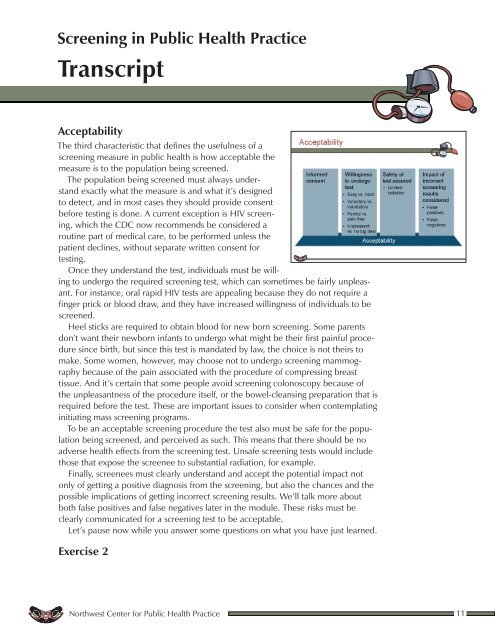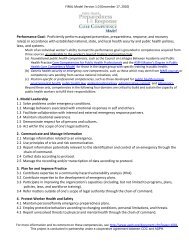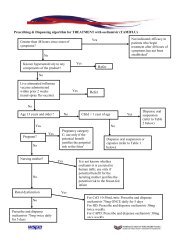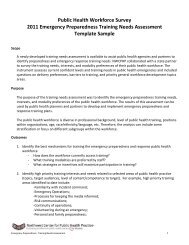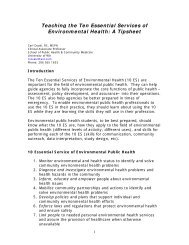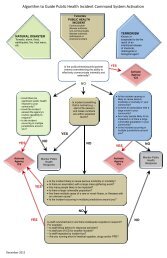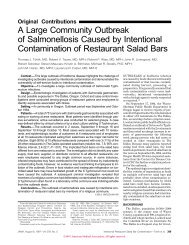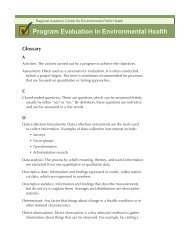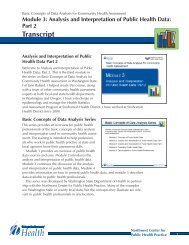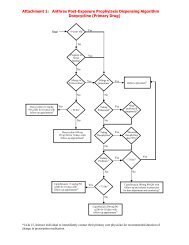Course transcript - Northwest Center for Public Health Practice
Course transcript - Northwest Center for Public Health Practice
Course transcript - Northwest Center for Public Health Practice
- No tags were found...
Create successful ePaper yourself
Turn your PDF publications into a flip-book with our unique Google optimized e-Paper software.
Screening in <strong>Public</strong> <strong>Health</strong> <strong>Practice</strong>TranscriptAcceptabilityThe third characteristic that defines the usefulness of ascreening measure in public health is how acceptable themeasure is to the population being screened.The population being screened must always understandexactly what the measure is and what it’s designedto detect, and in most cases they should provide consentbe<strong>for</strong>e testing is done. A current exception is HIV screening,which the CDC now recommends be considered aroutine part of medical care, to be per<strong>for</strong>med unless thepatient declines, without separate written consent <strong>for</strong>testing.Once they understand the test, individuals must be willingto undergo the required screening test, which can sometimes be fairly unpleasant.For instance, oral rapid HIV tests are appealing because they do not require afinger prick or blood draw, and they have increased willingness of individuals to bescreened.Heel sticks are required to obtain blood <strong>for</strong> new born screening. Some parentsdon’t want their newborn infants to undergo what might be their first painful proceduresince birth, but since this test is mandated by law, the choice is not theirs tomake. Some women, however, may choose not to undergo screening mammographybecause of the pain associated with the procedure of compressing breasttissue. And it’s certain that some people avoid screening colonoscopy because ofthe unpleasantness of the procedure itself, or the bowel-cleansing preparation that isrequired be<strong>for</strong>e the test. These are important issues to consider when contemplatinginitiating mass screening programs.To be an acceptable screening procedure the test also must be safe <strong>for</strong> the populationbeing screened, and perceived as such. This means that there should be noadverse health effects from the screening test. Unsafe screening tests would includethose that expose the screenee to substantial radiation, <strong>for</strong> example.Finally, screenees must clearly understand and accept the potential impact notonly of getting a positive diagnosis from the screening, but also the chances and thepossible implications of getting incorrect screening results. We’ll talk more aboutboth false positives and false negatives later in the module. These risks must beclearly communicated <strong>for</strong> a screening test to be acceptable.Let’s pause now while you answer some questions on what you have just learned.Exercise 2<strong>Northwest</strong> <strong>Center</strong> <strong>for</strong> <strong>Public</strong> <strong>Health</strong> <strong>Practice</strong> 11


